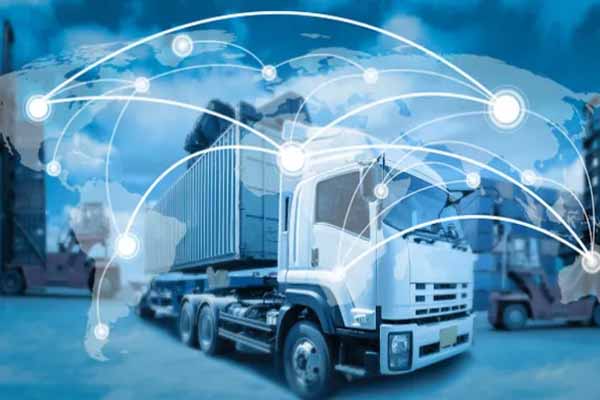Mobility is facing a quantum transformation, from the vehicles used to the last mile delivery technology all are wrapped up drive new growth for the fleet industry. During the critical pandemic times, Fleet came as a savior making lives in the new normal transit normally. The importance in fleet grows more as e-commerce becomes more vital sector logging a record growth in recent times. New technology adoption to empower companies within and entail newer approaches has been inevitable reason for the growth of fleet industry. Of all the ingredients helping to the growth of fleet industry, fleet telematics industry in India is still new and encourages further growth within the industry. Major parts of the addressable market remain largely untapped. The uptake of fleet management solutions is however growing and the market is to some extent favoured by government regulations including AIS 140. In the post-pandemic era, the fleet management business has transformed further as organizations embrace new technology technologies to boost efficiency and reduce expenses. According to Research and Markets, the total installed base of fleet management systems is forecasted to grow at a compound annual growth rate of 14.0 percent from 3.5 million units at the end of 2020 to almost 6.8 million units by 2025. The penetration rate in the total population of commercial vehicles and passenger cars in fleet use is at the same time estimated to increase from 10.2 percent in 2020 to 15.5 percent in 2025.
Electrification of Vehicles in Fleet
Electric Vehicles are taking over the automobile industry and today mostly have been the hero for fleet companies and industry. Though charging EVs seems to be the major tussle but with the state and central Government’s strong focus to develop EV charging infrastructure, EVs in the fleet industry are today well accepted. Concerns like how many vehicles need to be bought and the amount of distance travelled including “on the road” charge points required and the distance between them – whether owned and operated by the fleet owner, public charge points, or home-based charge points for lighter vehicles. Hence these snags do raises questions about having a seamless experience on roads while ensuring low distance covered charging points. On the other hand, EV infrastructure and the sector as a whole are in mission mode to address these challenges and fleet owners and operations gatekeepers seem to be happy with the ongoing development. EV adoption saw a vital increase in sales considerably in the fleer sector. This is a key blueprint stating that fleet companies are not hesitant to electrify their vehicles to take their services to the last mile. The capabilities of automatic vehicle (AV) technology have advanced significantly. By increasing driving hours, AV offers a substantial opportunity to boost productivity.
The New Revolution in Fleet Technology – Video Telematics System
Keeping the track of assets in the fleet was a major challenge for fleet owners. Video telematics systems have revolutionized these hassles. Monitoring vehicle locations or keeping track of the drivers today is just a click away for Fleet Owners. Today, there are variable Video Telematics systems available in the market. Video Telematics can be used to monitor adherence to fleet safety policies, and flag high-risk drivers that aren’t following essential protocols. A fleet culture focused on safety is important, and continuously reviewing video telematic data to improve drivers’ habits and train them to operate in a safety-focused way is the best practice overall and will minimize risks. Advanced video telematics setups allow drivers to receive alerts when engaging in risky driving behaviors or poor driving performance. Fleet managers today also use telematics and Geolocation fleet tracking. They may use a customizable dashboard to track their fleet drivers’ locations, monitor the status of their cars, and ensure they are following safety procedures. In 2022, fleet management solutions has integrated new features such as voice integration, comprehensive data analytics, and increased Artificial Intelligence (AI). In-cab video has also evolved as one of the hottest new fleet management solutions. Video telematics can also analyze data to understand when drivers are accelerating or braking too rapidly and to monitor fuel levels. A few Video Telematics offerings are Basic Dashcam | Connected Dashcam | Dual-Facing Dashcam | AI Connected Dashcam and Vehicle Telematics | AI Video Telematics, Insights, Coaching, and Scale.
Vehicle Security in Fleet – The New Emergence
Today’s fleets have valuable assets and information from physical security to technological security, vehicle security in fleets has become essential. It is said that the fleet management industry is taking severe steps to keep cyber security at top in the coming years. Also educating themselves in tactical to strategic management and upskilling in IT is seen as a key trend. With more data visibility, they will concentrate more on data gathering and review. An effective security solution for car fleets needs to go beyond focusing only on the car to analyze the complete picture of the fleet. It needs to be able to capture and understand the data from all the levels of the fleet architecture – car, driver, app and server – as well as get the context of the events to detect anomalies in the fleet-level behavior.
Fleet Data & Analytics
Geofencing, driving behavior, and alert systems, among other features, will be enhanced further to reduce injuries and hazards. Intelligent surveillance systems are projected to give more detailed vehicle and driver activity alerts. Hence analysing key data for performance, allows fleet managers to make both strategic decisions for the medium and long term, as well as tactics, the latter aimed at the shorter term. The analysis of the behaviour of drivers, to determine training needs aimed at achieving a reduction in the cost of fuel, would be an example of a strategic decision, resulting from the analysis of information provided by the fleet management system. While the adjustment of a route plan, in response to an incident on the road that could affect delivery time, would fit within the tactical decisions that data analysis allows us to make. Compliance with drivers ‘working hours: within the functions of the fleet manager, it is also to ensure that the recording of drivers’ working hours is processed correctly by the tachograph, in accordance with the applicable regulations in each case.
Large-scale data (Big Data) instantly provides fleet managers with information about their drivers, trucks and trailers through an onboard computer, telematics devices and connected software solutions. They collect all the information about your fleet, process and analyse it.
What is the end result? Practical information on issues such as:
- Driver performance.
- Fuel consumption.
- Profitable routes.
- Operational costs.
Last-Mile Delivery: The Hero of the Supply Chain
Automation speeds up the complete delivery process, lowers human effort, boosts productivity and profitability, aids in forecasting future needs and fleet management industry trends, and provides several other advantages. Last-mile logistics are the strategic decisions that go into a well-routed and efficient final-mile delivery. By using technology for route planning, fleets can cut their delivery times and ensure they’re taking routes that are safe for drivers and optimized for a great customer experience. Last mile logistics mean making sure you have the right sized vehicles, the correct upfit and a more centralized fleet.
Quick and Safe Delivery – A Fleet Priority
One-day delivery is no longer fast enough for today’s consumers. In order to complete the last-mile delivery more quickly, e-commerce business leaders are opening delivery “hubs” in populous cities. A transportation hub serves as warehouse space for delivery drivers to pick up goods and take them to their final destination. Some companies rely on the gig economy for assistance in completing these runs. The range is a non-issue for EV drivers in urban areas. An electric vehicle’s regenerative braking system, which recaptures kinetic energy during deceleration, is ideal for the stop waves of inner city traffic. Plus, with the current federal push to reduce carbon, many cities have updated infrastructure to support EV charging, ultimately making range anxiety a thing of the past















